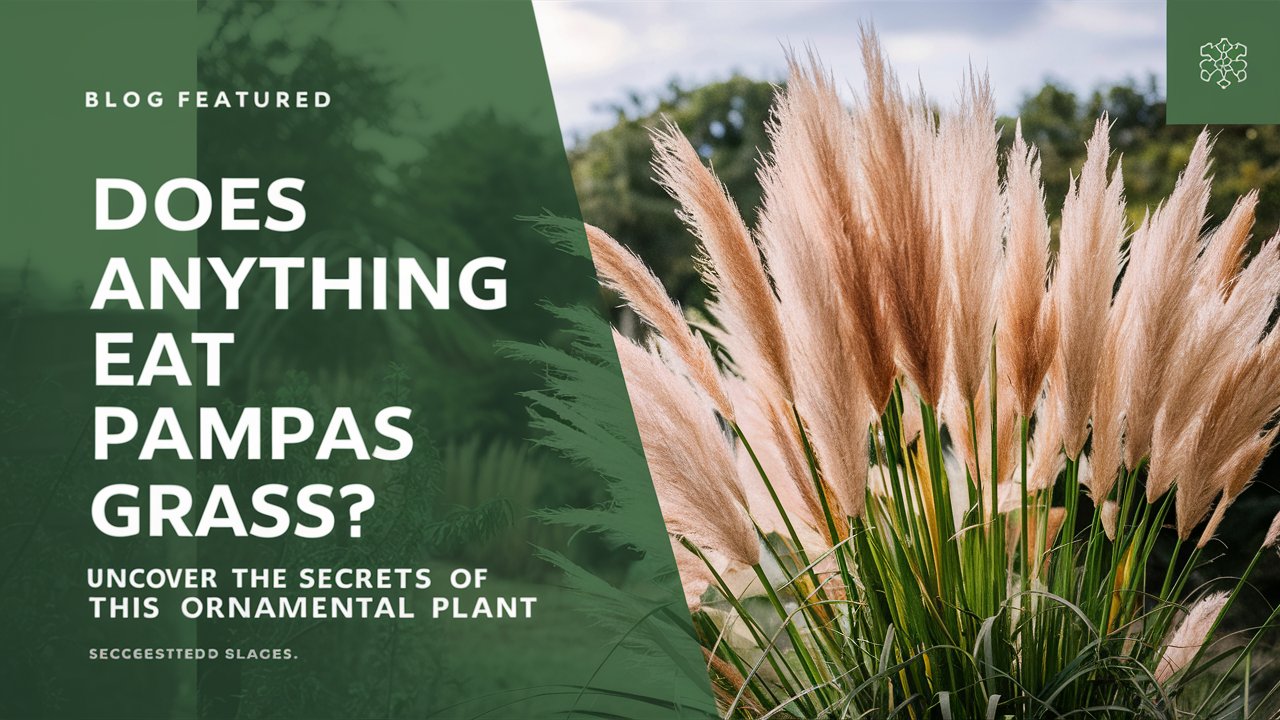Introduction
Does anything eat pampas grass? This question might intrigue gardeners, landscapers, and nature enthusiasts alike. Pampas grass, known for its towering plumes and decorative appeal, is a common sight in many gardens. But beyond its aesthetic value, it’s important to understand its role in the ecosystem and whether it has any natural predators.
What is Pampas Grass?
Pampas grass (Cortaderia selloana) is a tall, perennial plant native to South America. It is characterized by its large, feathery plumes and long, arching leaves. This ornamental grass is popular in landscaping due to its dramatic appearance and ability to thrive in various climates. However, its aggressive growth can sometimes make it an invasive species, outcompeting local flora.
Natural Predators: Does Anything Eat Pampas Grass?
So, does anything eat pampas grass? The answer is yes, but not many. Pampas grass is not a primary food source for many animals, but there are a few that may feed on it under certain conditions.
Herbivores
- Deer: In some regions, deer may graze on young pampas grass shoots, especially if other food sources are scarce.
- Rabbits: Occasionally, rabbits might nibble on the tender shoots of pampas grass, but they generally prefer other vegetation.
Insects
- Caterpillars and Grasshoppers: Certain caterpillars and grasshoppers might feed on pampas grass leaves, but they do not cause significant damage.
- Moths: Some species of moths may lay eggs on pampas grass, with the larvae feeding on the plant.
Despite these occasional feeders, pampas grass is relatively resistant to most herbivores and insects due to its tough, fibrous leaves and sharp edges, which can deter many animals.
Pampas Grass in the Ecosystem
Pampas grass plays a role in its native and introduced ecosystems, providing shelter and habitat for various small animals and insects. Its dense foliage can offer protection from predators and harsh weather. However, its invasive nature can also disrupt local ecosystems by displacing native plants and altering habitats.
Ecological Impact
- Habitat Alteration: In areas where pampas grass becomes invasive, it can change the local plant community structure, affecting the animals that rely on native plants for food and shelter.
- Biodiversity: The aggressive spread of pampas grass can reduce biodiversity by outcompeting native species.
Human Impact on Pampas Grass Consumption
Humans have a significant impact on the presence and spread of pampas grass. While not typically grown as a food crop, its use in landscaping has led to its spread in non-native areas.
Control Measures
- Mechanical Removal: Cutting down and removing pampas grass can help control its spread, but it requires consistent effort.
- Herbicides: Chemical treatments can be effective, but they must be used carefully to avoid harming other plants and animals.
- Biological Control: Introducing natural predators or diseases specific to pampas grass can help manage its growth, though this method requires thorough research to avoid unintended ecological consequences.
Frequently Asked Questions
Is Pampas Grass Poisonous?
Pampas grass is not known to be poisonous to humans or animals. However, its sharp leaves can cause cuts and irritation, so handling with care is advised.
Can I Grow Pampas Grass in My Garden?
Yes, you can grow pampas grass in your garden. It requires minimal maintenance once established but be mindful of its invasive potential and take measures to prevent uncontrolled spreading.
How Can I Prevent Pampas Grass from Spreading?
To prevent pampas grass from spreading, regularly remove seed heads before they mature and consider planting it in containers or with root barriers to limit its growth.
Conclusion
So, does anything eat pampas grass? While it’s not a primary food source for many animals, some herbivores and insects may occasionally feed on it. Understanding the ecological impact and control measures for pampas grass can help gardeners and landscapers manage this striking yet potentially invasive plant effectively. By maintaining a balance, we can enjoy the beauty of pampas grass while preserving the health of our ecosystems.


